Key Takeaways
- Healers play a vital role in D&D 5e, with spells like Heal offering immediate 70HP restoration for party members within range.
- Lesser Restoration is crucial to remove debilitating status conditions like Poison, Paralysis, Deafness, and Blindness on party members.
- Revivify is a top healing spell that can revive fallen party members within the last minute, making it essential for any healer’s arsenal.
Players and Dungeon Masters (DMs) of Dungeons & Dragons know there’s more to Wizards of the Coast‘s hit IP than just casting fireballs and hacking through monsters. Skilled players know the healer serves just as important a role as their tank and damage-dealing counterparts.

Related
Dungeons & Dragons: 5 Skills Every Ranger Should Know (& 5 To Avoid)
Rangers are a key part of any Dungeons & Dragons party, but, while some of their skills are absolutely vital, others are fairly useless.
Flexibility reigns in Dungeons and Dragons 5e (D&D 5e) and it’s often the healer that gets the party out of certain doom & saves the day. For players looking for more dynamic characters, a healer might serve this purpose well. After all, most healing-oriented classes in D&D 5e are built to be extremely flexible. Should players take on the responsibility of a healer, just what are the best spells that should be in their repertoire?
Updated by Rhenn Taguiam on November 25, 2024: With the new Player’s Handbook for Dungeons & Dragons 5th Edition offering exciting new ways of playing the hit TTRPG with new gameplay and Class options, fans of the acclaimed tabletop experience might be wondering how their healers can maximize their newfound opportunities of supporting the rest of the party. While the expanded Cleric options in the game certainly provided players with new ways of engaging with their Divine Powers, players may be curious as to what other Spells they can use to help their allies. As it turns out, sometimes some of the best “healing” Spells are those that ensure the party doesn’t necessarily get healed at all. Following the adage “Prevention is better than cure,” some of the best flexible support Spells in 5e include two versions of defensive auras with varying effects.
33 Holy Aura
8th-Level Abjuration
|
Casting Time |
Action |
|---|---|
|
Range |
Self |
|
Target |
Self |
|
Components |
Verbal, Somatic, Material (a tiny reliquary of 1,000 GP with a sacred relic) |
|
Duration |
1 Minute (Concentration) |
|
Classes |
Cleric |
A Cleric who wants to protect their party in Dungeons & Dragons at all costs could skip having to heal them and bolster their defenses against most threats. This is courtesy of Holy Aura, an 8th-Level Abjuration Spell with benefits worth the 1,000 GP worth of a reliquary required to cast the Spell. Creatures of choice within a 30-foot radius will emit a 5-foot dim light, get an Advantage on all Saves, and other creatures get a Disadvantage on Attacks against the chosen creatures. Undead or fiends who hit an affected creature need to succeed in a CON Save or be Blinded for the duration of the Spell.
At first glance, spending an 8th-Level Spell Slot on a guaranteed Advantage on Saves and emitting dim light for party members seems unnecessary. However, imposing a Disadvantage on all attacks from enemies targeting the Cleric’s allies, and even potentially guaranteeing a Blind for the duration of the Spell, are worthwhile benefits if the players use their cards correctly. After all, Spells that impose Disadvantage on Saves can have the party taunt a boss or an elite foe into attacking the Holy Aura’s affected members — potentially punishing them for being aggressive. Also, the imposed Disadvantage on all attacks can be a saving grace for the party, as many opponents have a multi-attack trait.
When To Use Holy Aura
A nifty way of using Holy Aura would be in situations where the party is overwhelmed by opponents they know are clearly Undead or Fiends — both of which are common-enough creatures for Dungeon Masters to use in most situations. Considering the potential kinds of threats players would face by the time they access Holy Aura, the Spell is best reserved for extreme encounters and cases of emergency — especially when in an unexpected boss fight.
32 Warding Bond
2nd-Level Abjuration
|
Casting Time |
Action |
|---|---|
|
Range |
Touch |
|
Target |
Willing Creature |
|
Components |
Verbal, Somatic, Material (pair of platinum rings, worth 50gp each, worn by the caster and the recipient) |
|
Duration |
1 Hour |
|
Classes |
Cleric |
Sometimes, the best kinds of healing are the ones that help ensure allies don’t get to need one at all — something Warding Bond can do for a Cleric and a willing target of their choice. Upon the Spell’s activation, the caster and the target form a mystic connection that bestows upon the target a +1 Bonus to AC, Saves, and Resistances to all Damage. In exchange, the Cleric takes the same damage as the target.
The Spell itself can be dismissed as an Action — although it automatically ends if the Cleric’s Hit Points are reduced to 0, the target is separated from them for more than 60 feet, or if the Spell is recast to either the caster or the target. While the caveat of the Cleric receiving the same kind of damage as their target might seem counterproductive, this buff can be handy if they’re supporting a heavy-hitting damage unit.
When To Use Warding Bond
The condition of the Cleric receiving the same amount of damage as their target seems more of a hint than a form of discouragement. Given how the Cleric is expected to receive the same damage as their target, they should select a target that could benefit from the +1 AC and Saves bonus but is also worth spending a 2nd-Level Spell Slot on. Considering the additional benefit of the recipient receiving Resistance to all Damage, it seems Warding Bond is best used to bolster further the defenses of a frontline tank or a damage specialist in the front lines who could use a defensive boost.
31 Ceremony
1st-Level Evocation
|
Casting Time |
1 hour |
|---|---|
|
Range |
Touch |
|
Target |
(Depends) |
|
Components |
Verbal, Somatic, Material (25gp worth of Powdered Silver) |
|
Duration |
Instantaneous |
|
Classes |
Cleric, Paladin |
While it’s common for a TTRPG like Dungeons & Dragons to allow players to marry off their characters whenever situations call for them, it’s only thanks to Ceremony via Tasha’s Cauldron of Everything that put a number to such an occasion. When performed by a Cleric or a Paladin, targets no more than 10 feet away from them can be affected by the following rituals:
- Atonement: Restoring one’s Alignment after the caster succeeds a DC 20 Insight (WIS) Check.
- Bless Water: Turn a vial of water into holy water.
- Coming of Age: Hold a young adult. For the next 24 hours, the target has a +1d4 buff to any Ability Check. This can only be cast on a target once.
- Dedication: Cast upon a humanoid dedicated to the caster’s god, the target gets a +1d4 buff to any Saving Throw. This can only be cast on a target once.
- Funeral Rite: Touch a corpse. For the next seven days, the corpse cannot become undead unless through a Wish Spell.
- Investiture: Touch a willing humanoid. The caster chooses a 1st-Level Spell they have prepared and expend a Spell Slot and Components as though they have cast it. The Spell won’t work, but the target can cast the said Spell without using the Spell Slot and components. The Spell has to be cast within an hour or it is lost.
- Wedding: Touch adults to be bonded together. For the next seven days, the target gets +2 AC whenever they are within 30 feet of each other. The targets can only benefit from this rite again if they are widowed.
When To Use Ceremony
Despite the variety in the options casters have in terms of benefits, its rather lackluster effects for a ritualized Spell can trivialize Ceremony unless used for flavor and on NPCs. However, certain uses of Ceremony could be useful depending on the circumstances. For instance, Bless Water could help players in locations where there are a lot of evil spirits or unholy presence. Likewise, Funeral Rite is useful should players want to protect an important NPC or another character from being raised as undead while they find a way to resurrect them. Investiture can become a nifty investment for the party who is about to embark on a quick adventure, as even giving Bless to a Rogue could help them score a high-damaging first-turn attack.
30 Fast Friends
3rd-Level Enchantment
|
Casting Time |
1 Action |
|---|---|
|
Range |
30 Feet |
|
Target |
Any Humanoid |
|
Components |
Verbal |
|
Duration |
1 Hour (Concentration) |
|
Classes |
Bard, Cleric, Wizard |
There are some instances where a high-stakes conflict can be pacified if someone can make a case that the fight is detrimental to both sides. This is something that Fast Friends can potentially facilitate, which fits its origins from Acquisitions Inc. which emphasizes the viability of negotiation – no matter the situation.
When cast, Fast Friends can only be used against one humanoid who can see, hear, and understand the Spellcaster. If they fail a WIS Save, they become Charmed for the duration. Unlike other Charm effects, using Fast Friends allows the caster to direct the target to do activities in a friendly manner. These tasks can be provided one after the other. However, tasks that might harm or conflict with the creature’s desires will allow it to make a WIS Save, which is taken with Advantage if Fast Friends is used in combat. Should the command kill the target, the Spell also ends. When the Spell ends, the target will know they have been Charmed by the Spellcaster.

Related
Dungeons & Dragons: 24 Backgrounds With The Strongest Features
Every D&D background has its unique features, but some are more widely useful across campaigns than others.
When To Use Fast Friends
The idea of using Fast Friends is the implication that users have already skedaddled by the time the Spell ends, similar to a comedy skit. Conversely, players can use this opportunity to manipulate a potentially hostile target to actually “consider” whatever terms the characters are telling them, which can help them get out of sticky situations. When used intelligently, that hour-long duration could get players confidential information, or get characters inside heavily guarded areas that could otherwise result in a confrontation.
29 Sanctuary
1st-Level Abjuration
|
Casting Time |
1 Bonus Action |
|---|---|
|
Range |
30 feet |
|
Target |
Creature in Range |
|
Components |
Verbal, Somatic, Material (a Small Silver Mirror) |
|
Duration |
1 Minute |
|
Classes |
Artificer, Cleric |
When high-intensity situations in fights in Dungeons & Dragons lead to a fatal attack missing a player character, the table might declare it as an act of divine intervention. Humor aside, this is precisely what Sanctuary enables a Spellcaster to do for their allies. When cast, Sanctuary practically “wards” the target against attacks.
Throughout its duration, creatures that try to attack the target in Sanctuary – whether through a Spell or a standard attack – must first succeed a WIS Save. Failing the Save will force the target to lose their Attack or choose another applicable target. Players should note that the Spell doesn’t necessarily protect the target from AOEs, such as Fireball. The Spell ends when the warded target attacks, deals damage to another creature or casts a Spell that affects the enemy.
When To Use Sanctuary
Somewhat an alternative to Shield, Sanctuary can become a saving grace for those who possess it and manage to cast it in emergencies. Since this is a Bonus Action, the Spellcaster can essentially still attack before whipping out Sanctuary for added defensive measures until the start of their next turn. Since this is a 1st-Level Spell that doesn’t need Concentration, a frontline specialist like the Paladin can get this Spell as part of the Magic Initiate: Cleric Feat and protect party members in critical condition.
28 True Resurrection
9th-Level Necromancy
|
Casting Time |
1 Hour |
|---|---|
|
Range |
Touch |
|
Target |
A dead creature who didn’t die because of old age and wasn’t dead for more than 200 years |
|
Components |
V, S, M |
|
Duration |
Instantaneous |
|
Classes |
Cleric, Druid |
While similar in wording to the original 7th-Level Resurrection Spell, players who become a powerful enough Spellcaster to use True Resurrection (9th-Level Necromancy) will meet the pinnacle of bringing someone to life. As long as their target hasn’t been dead for more than 200 years and their soul is willing, the target may be restored to life with their body intact – complete with restored missing organs and limbs and closed mortal wounds.
From this point of view, True Resurrection already trumps its 7th-Level Dungeons & Dragons Spell counterpart, had it not been for its incredibly high Spell Level. As a 9th-Level Spell, and with most D&D Spells only reaching 5th-Level, it’s likely that only an NPC or an incredible boon would grant players access to True Resurrection, which means it’s advised they use this Spell very carefully.
When To Use True Resurrection
The extreme technical and demanding nature of True Resurrection means it’s only to be used in the most extreme of emergencies. In situations where traditional Resurrection won’t be effective in bringing back a comrade or a relevant member of the story, players may opt to spend their hard-earned Spell Slot on True Resurrection instead. The tricky nature of the Spell may come with caveats from the Dungeon Master, so players may need to anticipate a hefty consequence or even haggle with the DM before using such a Spell.
27 Temple Of The Gods
7th-Level Conjuration
|
Casting Time |
1 Hour |
|---|---|
|
Range |
120 Feet |
|
Target |
– |
|
Components |
V, S, M (5gp worth of a Holy Symbol) |
|
Duration |
24 Hours |
|
Classes |
Cleric |
A Cleric in Dungeons & Dragons might say that their existence alone implies the presence of the deity they’re worshipping, that anywhere can be a temple to a deity for as long as its denizens are willing to make it a place of worship. With Temple of the Gods (7th-Level Conjuration), this becomes a reality. A powerful enough Cleric only needs an unoccupied cube to create a Temple (both in the real and astral plane) for their deity, with all details based on the Cleric’s specifications.
Perhaps more impressive are the things Clerics can do with those inside their Temple. Clerics can decide that certain types of creatures can’t enter the Temple, lest they make a CHA Save that can hinder them from entering the Temple, or do so with a d4 Penalty to all their checks. Friendlies in the Temple also gain bonuses equal to the Cleric’s WIS Mod whenever they regain Hit Points from at least a 1st-Level Spell.
When To Use Temple Of The Gods
The expensive nature of the Spell does emphasize a case of whether this is more worthwhile compared to upcasting a more instantaneous Spell. This Spell practically transforms an abode into a divine sanctuary, making this a must-cast for characters expecting to enjoy longer downtimes or taking up residence in an area for an extended period of time. As such, Temple of the Gods can become a practical daily investment for parties who are staying in hub worlds, traveling settlements, or in areas where they expect to spend a few sessions solving a crisis or two.
26 Mass Heal
7th-Level Conjuration
|
Casting Time |
1 Action |
|---|---|
|
Range |
60 Feet |
|
Target |
Creatures within sight range |
|
Components |
V, S |
|
Duration |
Instantaneous |
|
Classes |
Clerics |
At higher-level play, healing abilities can become invaluable due to the damage output of enemies against the players and their allies. For Clerics, who start to get access to more powerful Dungeons & Dragons abilities at these levels, the capability of using Heal across multiple targets can be quite convenient when fighting sub-boss or boss-level characters. This is the need that Mass Heal (7th-Level Conjuration) fulfills, as the Cleric using the Spell is imbued with healing energy to heal 700 Hit Points across all creatures they can see.
In the case of emergencies, the Cleric can dump Mass Heal on their entire party to reset their Hit Points to possibly overcome an impossible situation. Should players have allies, Mass Heal could also get everyone to near-optimal condition, extending the abilities of everyone else to contribute to a difficult fight.
When To Use Mass Heal
Heal in itself is already an expensively higher-level Spell that may compete with other lower-level healing abilities in the case of an emergency. However, in dire moments when most of the party members are almost down and Heal takes too long to apply to one party member at a time, Mass Heal could fill the gap – especially in extremely high-level play situations where such a recovery tool can turn the tide of battle. Given its exorbitant cost, it’s likely that players are only given a few chances to use this ability. As such, it may be more practical for players to save up their higher-level Spell Slots in situations where they know they may contend against a powerful boss, or even during the final few sessions against the BBEG.
25 Resurrection
7th-Level Necromancy
|
Casting Time |
1 Hour |
|---|---|
|
Range |
Touch |
|
Target |
A dead creature who didn’t die of old age, isn’t undead, and hasn’t been dead for 100 Years |
|
Components |
V, S, M (Diamond worth 1,000 GP) |
|
Duration |
Instantaneous |
|
Classes |
Bard, Cleric |
When it comes to the actions a player can take in Dungeons & Dragons, only Resurrection (7th-Level Necromancy) and True Resurrection are the Spells capable of bringing someone back to life. In the case of the lower-level Resurrection, players not only need a coveted 7th-Level Spell Slot but also an expensive 1,000 GP-cost Diamond to trade for the life of the ally they are hoping to bring (back) to life. This may be worthwhile for the right target, as not only does this Spell restore missing body parts, but it also cures poisons and normal diseases.
The imperfect nature of the Spell comes with its caveats, such as the inability to cure magical diseases, and even provides -4 to all rolls until the target finishes four (4) Long Rests. The caster also gets Disadvantage on rolls and can’t cast Spells until they take a Long Rest, making Resurrection tricky to accomplish in dangerous situations.
When To Use Resurrection
As one of the few Spells in the game that can offer a viable means of bringing allies back to life, Resurrection is a must-have for Spellcasters who can learn it. Due to the time-intensive nature of revivals in D&D, it may be helpful for healers to not delay in using the Spell should an ally fall in extreme emergencies. After all, recovering a Spell Slot and expended resources is preferable compared to permanently losing an ally who has already become an integral part of the party, the story, and even the player character’s life.
24 Power Word Heal
9th-Level Evocation
|
Casting Time |
1 Action |
|---|---|
|
Range |
Touch |
|
Target |
N/A |
|
Components |
Verbal, Somatic |
|
Duration |
Instant |
|
Classes |
Bard, Cleric |
Sometimes, all it takes for someone to recover completely is to bend the laws of physics itself to “force” healing onto a subject, and this is exactly what Power Word Heal (9th Level Evocation) does. The Spell transpires over the course of a single Action, with an instantaneous effect.

Related
Tabletop Games To Play If You Like Dungeons & Dragons
Dungeons and Dragons may be the most famous tabletop RPG, but these other games will also keep fans happy.
The spellcaster needs only to touch the target (Verbal, Somatic Components) for a wave of energy to be released unto them. This energy will have the target regain all their Hitpoints and end any condition if it’s Charmed, Frightened, Paralyzed, or Stunned. Likewise, using this on a prone creature can have them use their Reaction to stand up. However, this Spell doesn’t work on constructs or the undead.
When To Use Power Word Heal
On top of its full healing is the capacity to heal Charmed, Frightened, Paralyzed, and Stunned; status conditions that not even Mass Heal can assuage. While Mass Heal can target more individuals and Foresight can target more status conditions, Power Word Heal is a perfect middle ground, especially when players are willing to use a 9th-Level Slot.
23 Vampiric Touch
3rd-Level Necromancy
|
Casting Time |
1 Action |
|---|---|
|
Range |
Self |
|
Target |
N/A |
|
Components |
Verbal, Somatic |
|
Duration |
Concentration (1 Minute) |
|
Classes |
Sorcerer, Wizard |
A damaging effect that heals is still a healing effect, and this is exactly what Vampiric Touch (3rd Level Necromancy) does. Throughout one Action, a spellcaster can concentrate on a target within their reach for up to one minute and can siphon the life force from the target unto the caster.
When this Spell is cast (Verbal, Somatic Components), the spellcaster has to make a melee spell attack against the target, of which the target takes 3d6 Necrotic Damage on a hit. The spellcaster then gains Hitpoints equal to half of the damage dealt to the target. What’s tricky here is that the spellcaster can repetitively make the spell attack once per turn until the spell ends, and adds 1d6 to the damage die for every Spell Slot used above 3rd-Level. This is easily a nifty Spell to have for Subclasses that try to tap into both a Spellcasting and melee build.
When To Use Vampiric Touch
Despite the 3d6 Necrotic Damage available to Vampiric Touch, only healing for half that amount makes Vampiric Touch a more attractive combat spell instead of a recovery option. Vampiric Touch is more useful for stealing HP from minions with the intent of killing them after the Spell to maximize its lifesteal component.
22 Aura Of Vitality
3rd-Level Evocation
|
Casting Time |
1 Action |
|---|---|
|
Range |
Self (within 30ft. radius) |
|
Target |
N/A |
|
Components |
Verbal |
|
Duration |
Concentration (1 Minute) |
|
Classes |
Paladin, Cleric, Druid |
One of the best ways for a spellcaster to heal their fighting allies is to heal a lot of them at the same time, which is how the Aura of Vitality (3rd-Level Evocation) works. When the spellcaster concentrates for up to a minute and casts the spell (Verbal Component), they can create a healing energy that reaches all living things up to 30 feet from them.
The aura moves with the spellcaster, allowing them to use their Bonus Action to cause a living creature in the area, including the spellcaster, to regain 2d6 HP. This extremely useful spell can provide instantaneous heals without spending Spell Slots, since a full minute can take up to six combat turns.
When To Use Aura Of Vitality
This spell is a reliable source of emergency heals when recovering from a tough fight. As it lasts 60 seconds, and with each round lasting 6 seconds, Aura of Vitality can heal up to 20d6 HP. This is more than the maximum 12d6 healing from Healing Spirit. However, given its nature as a Concentration Spell, Healing Spirit is not recommended in combat.
21 Regenerate
7th-Level Transmutation
|
Casting Time |
1 Minute |
|---|---|
|
Range |
Touch |
|
Target |
N/A |
|
Components |
Verbal, Somatic, Material (holy water, prayer wheel) |
|
Duration |
1 Hour |
|
Classes |
Bard, Cleric, Druid |
One of the most potent Spells in 5e is Regenerate (7th-Level Transmutation), which stimulates a creature’s natural abilities through special components (Verbal, Somatic, and Material Components in the form of a prayer wheel and holy water). When the spell begins, the target regains as much as 4d8+15 HP. They may regain up to 10 HP each minute throughout the hour-long spell.

Related
24 Tabletop RPGs That Dungeons & Dragons Fans Should Try
Dungeons & Dragons is a fantastic RPG adventure but there are some great Tabletop titles out there that D&D fans would also enjoy.
Even more impressive, Regenerate can help creatures regain their severed limbs within two minutes. If the spellcaster has the severed limb, holding the part onto the stump will have the limb “tie” itself to the stump and be healed. This spell is especially useful to help Subclasses that emphasize engaging in battle, despite the risks.
When To Use Regenerate
While the 7th-Level Spell Slot seems costly for a 4d8+15 HP heal, the additional effect of 1 HP healed per turn plus the benefit of restoring severed wounds can make it a must-have. Its lack of Concentration, on top of having up to 600 HP healed within an hour (provided the character doesn’t take any injuries in the process) makes this an attractive spell for healers.
20 Mass Cure Wounds
5th-Level Evocation
|
Casting Time |
1 Action |
|---|---|
|
Range |
60 feet |
|
Target |
N/A |
|
Components |
Verbal, Somatic |
|
Duration |
Instant |
|
Classes |
Bard, Cleric, Druid |
Mass Cure Wounds (5th-Level Evocation) has the potential to be an extremely potent healing spell. This instantaneous spell requires an Action as well as Verbal and Somatic components to be cast within a range of 60 feet. When activated, up to six creatures within a 30-foot-radius sphere receive 3d8+Spellcasting Ability Modifier worth of Hit Points. The amount of healing gets a 1d8 boost for every Spell Slot higher than 5th Level.
Despite the multi-target nature of Mass Cure Wounds, its high Spell Slot cost might not make it worth the trouble of using. It might be a better strategy to reserve 5th-Level Spell Slots for damage-dealing Spells and use lower-level Slots for minor healing.
When To Use Mass Cure Wounds
Due to its Spell Slot cost, Mass Cure Wounds is only useful with a large party. 3d8 Healing isn’t especially impressive for a 5th-Level spell. This spell is best used with Beacon of Hope since it fills up the maximum HP of the creature it affects.
19 Heroes’ Feast
6th-Level Conjuration
|
Casting Time |
10 Minutes |
|---|---|
|
Range |
30 Feet |
|
Target |
N/A |
|
Components |
Verbal, Somatic, Material (1,000 GP worth gem-encrusted bowl) |
|
Duration |
Instant |
|
Classes |
Cleric, Druid, Bard |
Heroes’ Feast (6th-Level Conjuration) is the equivalent of an invigorating meal before a hunt in Monster Hunter. Healers only need 10 minutes to cast this spell with Verbal, Somatic, and Material components. Once they finish, Heroes’ Feast brings forth an amazing feast for up to 12 other creatures to enjoy.
Heroes’ Feast truly shines with its benefits. All participating creatures gain a 2d10 increase in both HP and HP Maximum. They also now roll Wisdom Saves with an advantage. Lastly, these creatures gain immunity to being frightened and poisoned. These benefits last for as long as 24 hours, which can become more than enough time for the heroes to outlast a major encounter or even an entire session.
When To Use Heroes’ Feast
This spell is not recommended ability in emergencies. It’s more of a technical healing that visualizes the preparatory feast or an ending celebration. The benefits make it best used as a pre-battle feast. The 2d10 healing on top of the same amount of Temporary Hit Points can make it an extremely useful preemptive healing ability.
18 Aura Of Life
4th-Level Abjuration
|
Casting Time |
1 Action |
|---|---|
|
Range |
Self (extends to 30ft. radius) |
|
Target |
N/A |
|
Components |
Verbal |
|
Duration |
Concentration (10 Minutes) |
|
Classes |
Paladin, Cleric |
Despite having the appearance of hulking juggernauts, Paladins in Dungeons & Dragons remain beacons of virtues represented by their convictions. While still usable by Clerics, the Aura of Life (4th-Level Abjuration) remains a popular Spell used by holy warriors. When cast with a Verbal Component, this 4th-Level Abjuration Spell will release a burst of life energy from the Paladin and extend to a 30-foot radius. Throughout the Spell’s 10-minute radius, the aura moves alongside the Paladin, granting the caster and everyone around them Resistance to Necrotic Damage and disabling any effects that reduce Hit Point Maximum.
However, what makes Aura of Life extremely valuable is how non-hostile living creatures inside its radiating light will get 1 Hit Point should they begin their turn at 0 Hit Points. Since a creature at 0 Hit Points will immediately start rolling Death Saves, a Paladin with an Aura of Life can practically stop party members from entering the brink of death. While it’s true that 1 HP party member may still be a liability in combat, the resident Cleric may be able to whip out a healing Spell to get everyone up to speed.
17 Greater Restoration
5th-Level Abjuration
|
Casting Time |
1 Action |
|---|---|
|
Range |
Touch |
|
Target |
A creature touched by the caster |
|
Components |
Verbal, Somatic, Material (100 GP worth of diamond dust) |
|
Duration |
Instant |
|
Classes |
Bard, Cleric, Druid |
Resident healers in D&D who want to cure an ally of a status effect may use Lesser Restoration (2nd-Level Abjuration) to get the job done, but Greater Restoration (5th-Level Abjuration) is a more reliable Spell for extreme emergencies. Its status as a 5th-Level Abjuration and its requirements of Verbal, Somatic, and Material (diamond dust at least worth 100 gold) Components are reflected in the kind of conditions it heals.

Related
10 Best Dungeons & Dragons Games Set In The Forgotten Realms
These are some of the best Dungeons & Dragons games set in the forgotten realms.
When cast, Greater Restoration can remove one of many things to a target: a level of Exhaustion, an effect (Charmed, Petrified), a reduction (to Ability Scores, HP), and a curse (includes Cursed Magic Items). Moreover, Greater Restoration is the only Spell in the game that can restore amputated body parts. Should a player lose a limb or two in a harsh fight, someone with Greater Restoration should be able to regain their lost limbs.
16 Virtue
Abjuration Cantrip
|
Casting Time |
1 Action |
|---|---|
|
Range |
Touch |
|
Target |
N/A |
|
Components |
Verbal, Somatic |
|
Duration |
1 Round |
|
Classes |
Cleric |
In perilous D&D encounters, characters on the brink of death may want to get at least one more attack to finish the boss. Doing this can facilitate quite the epic moment, with Virtue (Abjuration Cantrip) from Unearthed Arcana: Starter Spells being the perfect Abjuration Cantrip to encapsulate these last-ditch efforts.
When cast, a spellcaster uses Virtue to imbue life into someone they touch. They get 1d4 + Spellcasting Modifier Temporary Hit Points throughout the round. Despite the limited healing this Spell provides, this could prove just enough for the party’s DPS to secure the kill or the resident tank to hold the line and help the others escape.
15 Beacon Of Hope
3rd-Level Abjuration
|
Casting Time |
1 Action |
|---|---|
|
Range |
30 feet |
|
Target |
Any creatures within the range |
|
Components |
Verbal, Somatic |
|
Duration |
Concentration (1 Minute) |
|
Classes |
Cleric |
Sometimes, the Cleric of D&D isn’t just the resident healer, but rather the representation of hope that everything will be alright. This is encapsulated in Beacon of Hope (3rd-Level Abjuration), a Spell that simply needs the Cleric to perform the right Verbal and Somatic Components to unleash the light of a better tomorrow to their selected creatures within a 30-foot radius.
Throughout the Spell’s minute-long duration, the Cleric’s Concentration facilitates constant buffs, namely Advantages to WIS Saves and Death Saves, as well as healing the Maximum Hit Points allowed from any recovery. Even without a secondary healer, securing the most heals from a mere Potion of Healing inside the Beacon of Hope can help the party outlast dungeons that won’t give them chances to undergo Rests.
14 Healing Spirit
2nd-Level Conjuration
|
Casting Time |
1 Bonus Action |
|---|---|
|
Range |
60 Feet |
|
Target |
N/A |
|
Components |
Verbal, Somatic |
|
Duration |
Concentration (1 Minute) |
|
Classes |
Druid, Ranger |
Druids and Rangers should consider getting Healing Spirit (2nd-Level Conjuration) as soon as they can. This Spell needs a Bonus Action as well as Verbal and Somatic components to cast and lasts up to a minute with concentration. The spell calls forth a transparent spirit to occupy a five-foot cube within 60 feet. The Healer can then prompt that Spirit to heal 1d6 Hit Points of any creature that enters its space.
Additionally, the Caster can move the Spirit up to 30 feet as a Bonus Action. The Spirit can heal for as many as 1 + Spellcasting Ability Modifier before it disappears. Due to its situational nature, a Healing Spirit can be handy in battles where the Healer has the room to concentrate.
When To Use Healing Spirit
Healing Spirit’s Bonus Action cost can make it a nifty mass-healing tool for as long as 10 rounds. However, its Concentration requirement can become rather restraining to the caster involved, as their allies may now have to protect them.
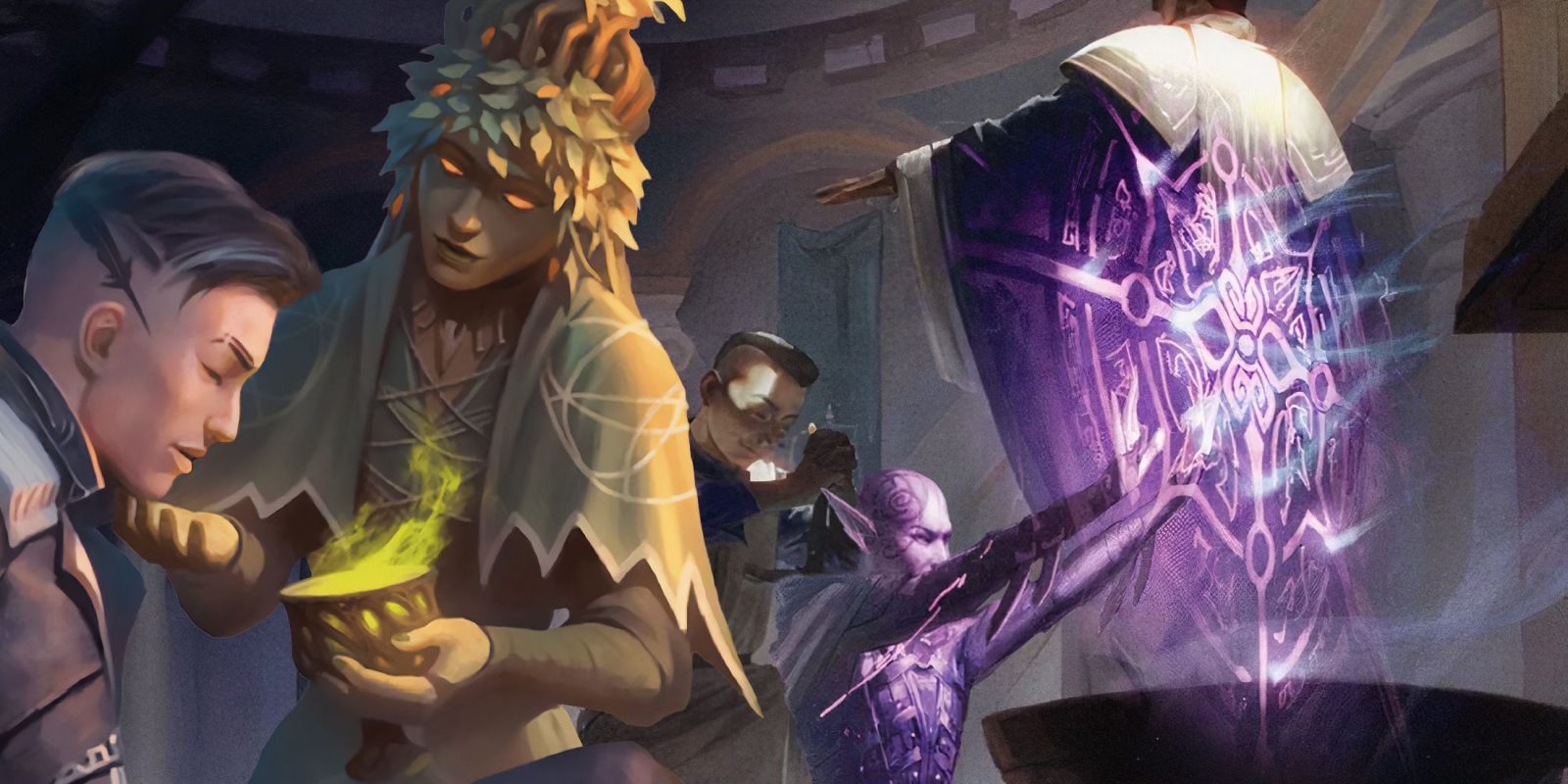

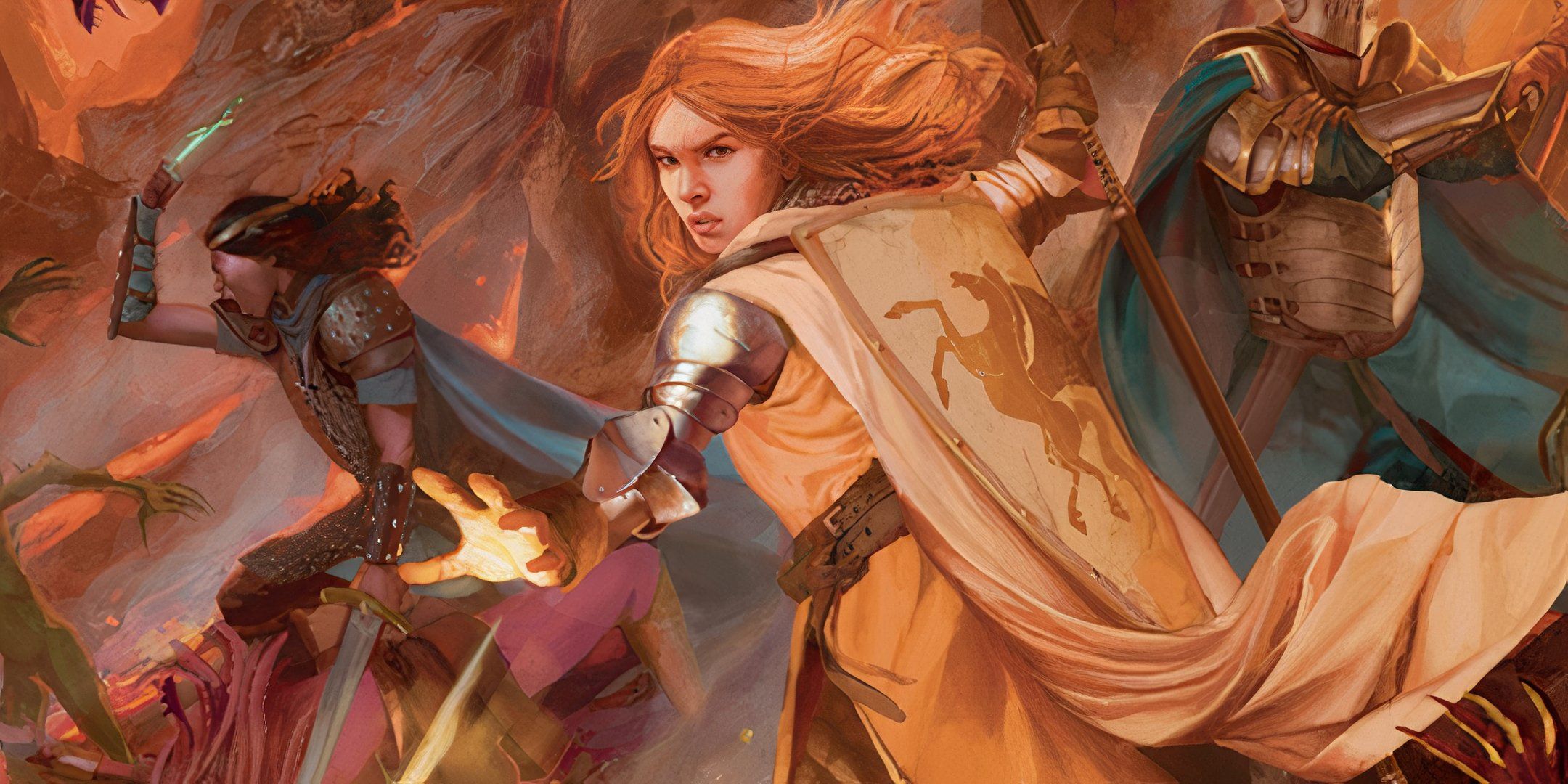
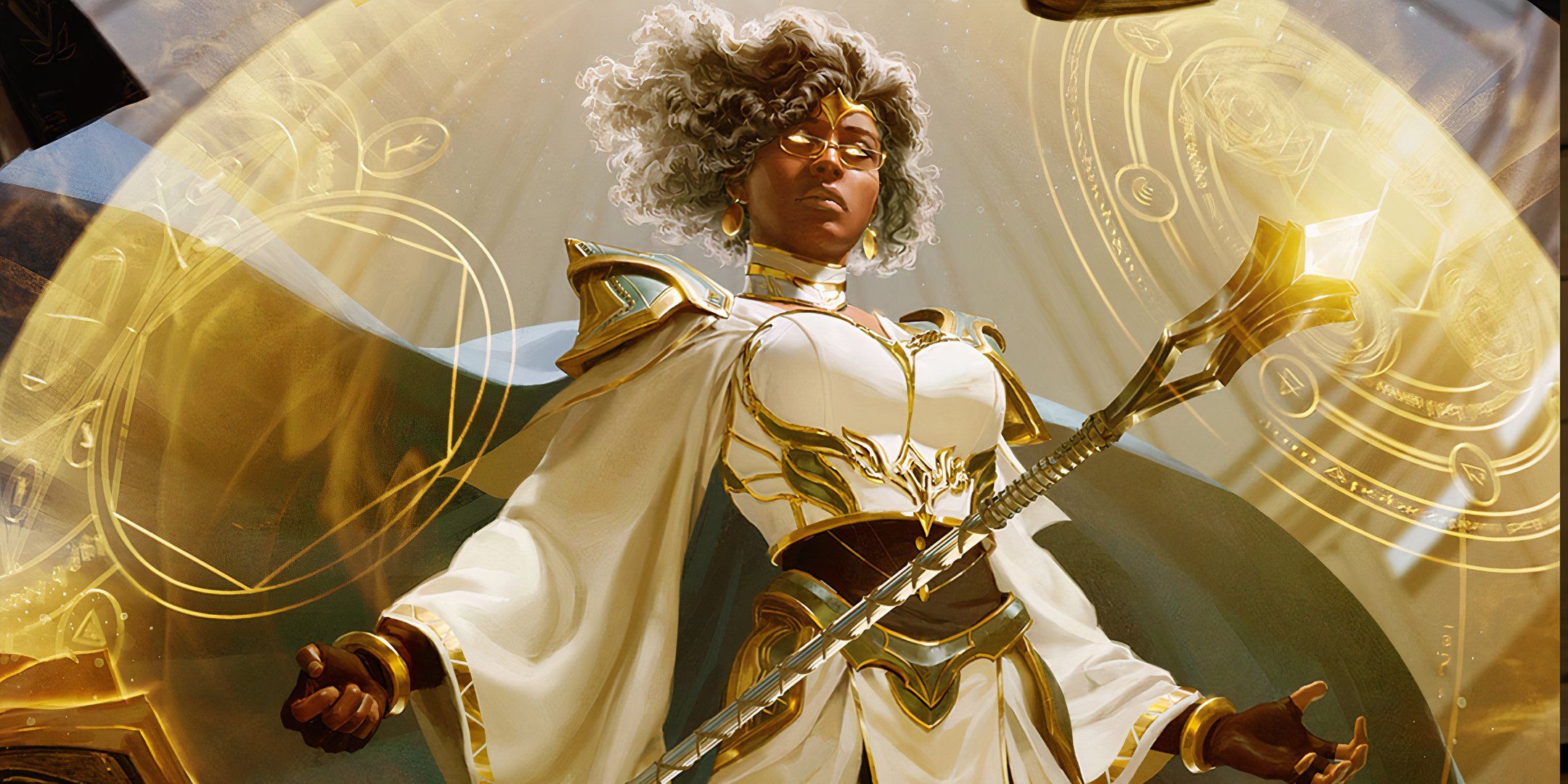
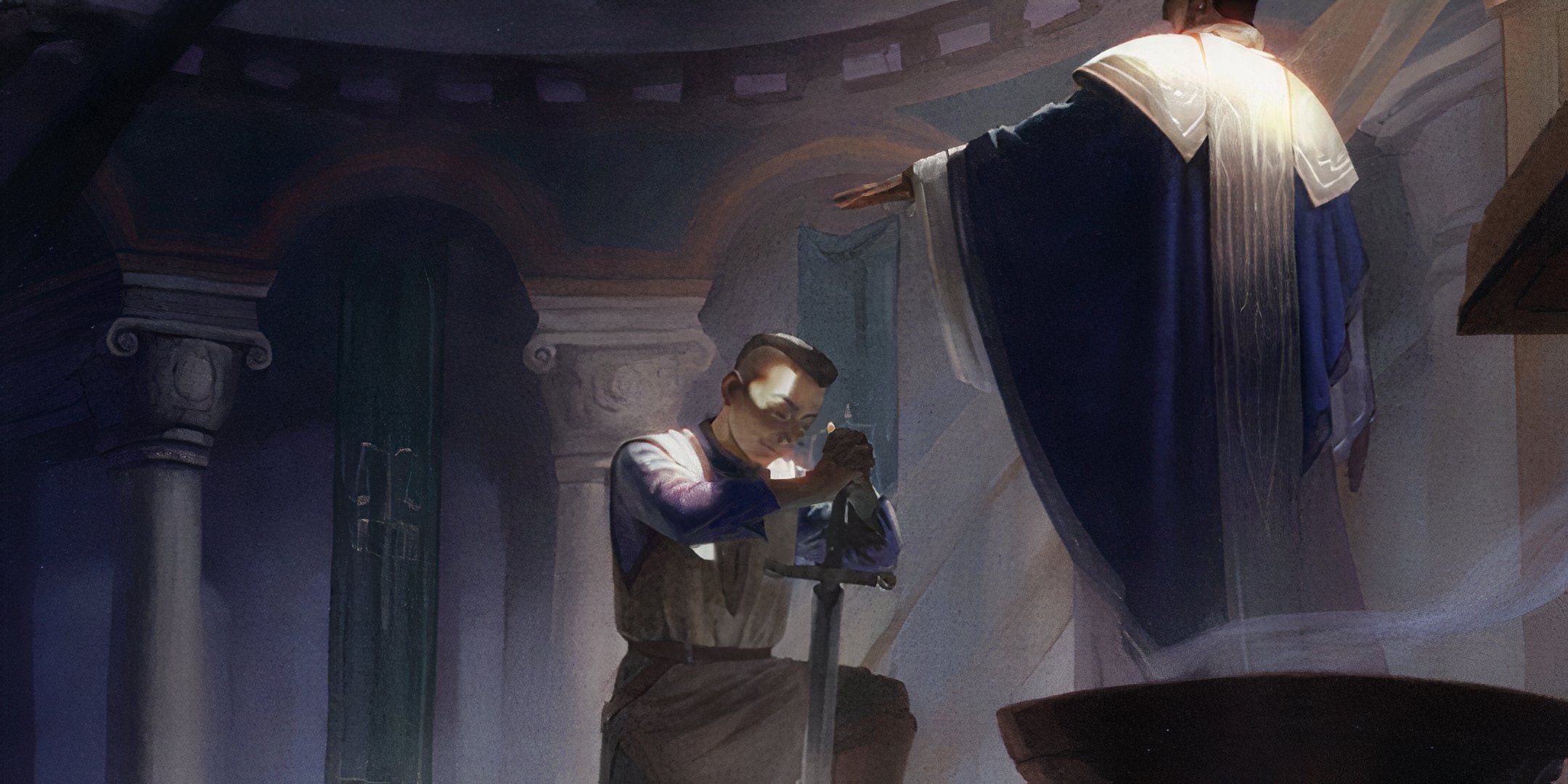
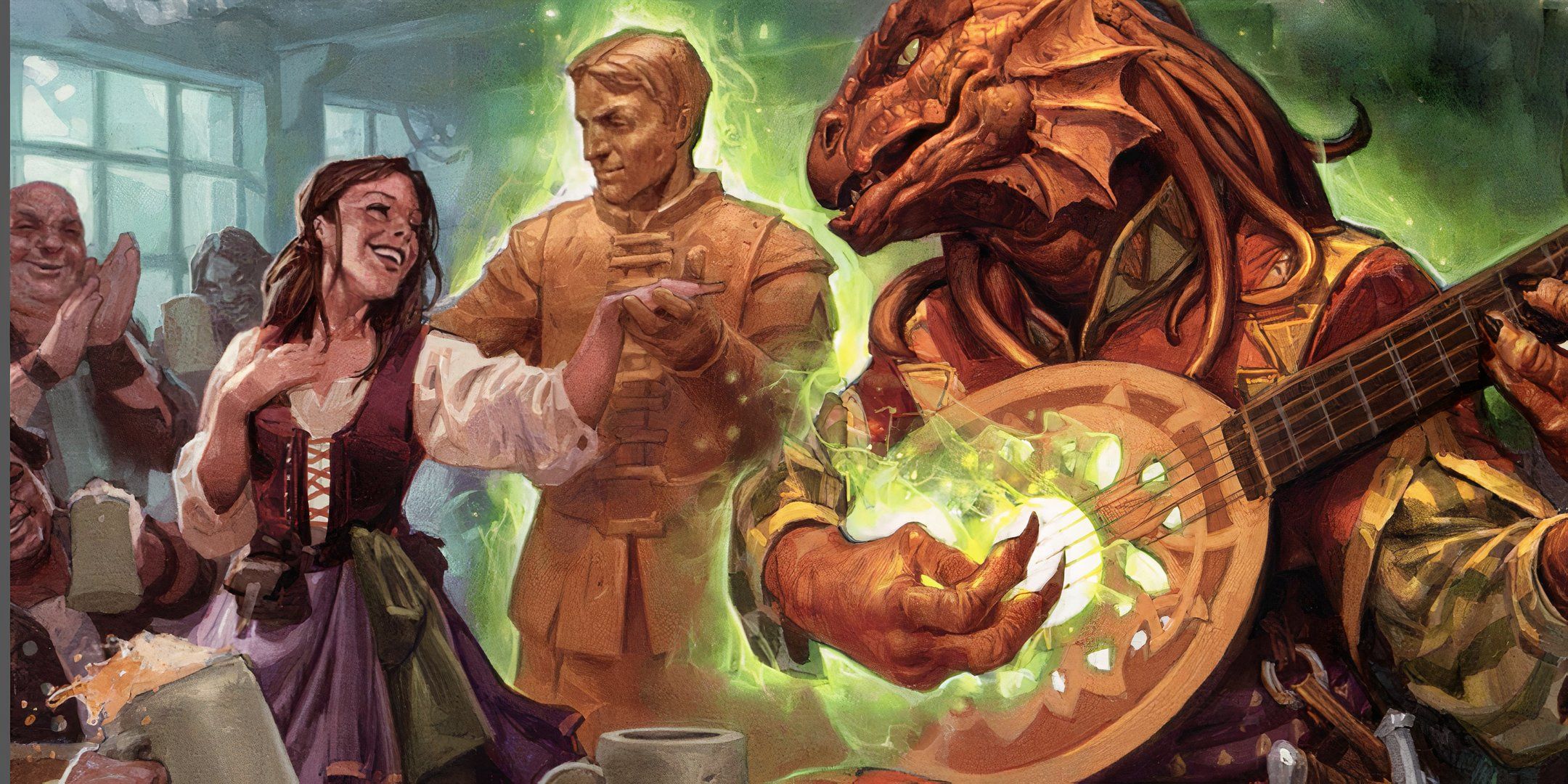
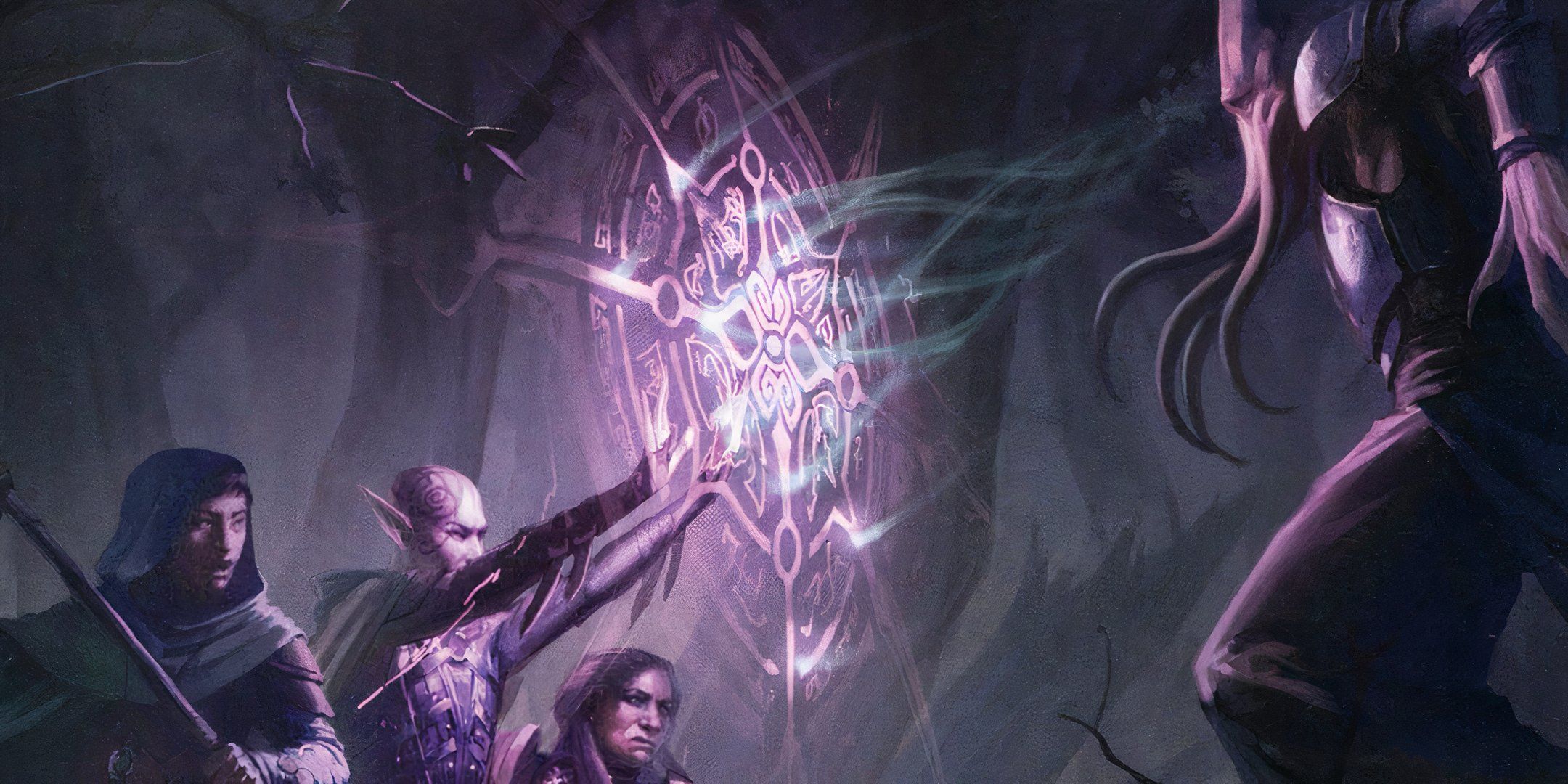


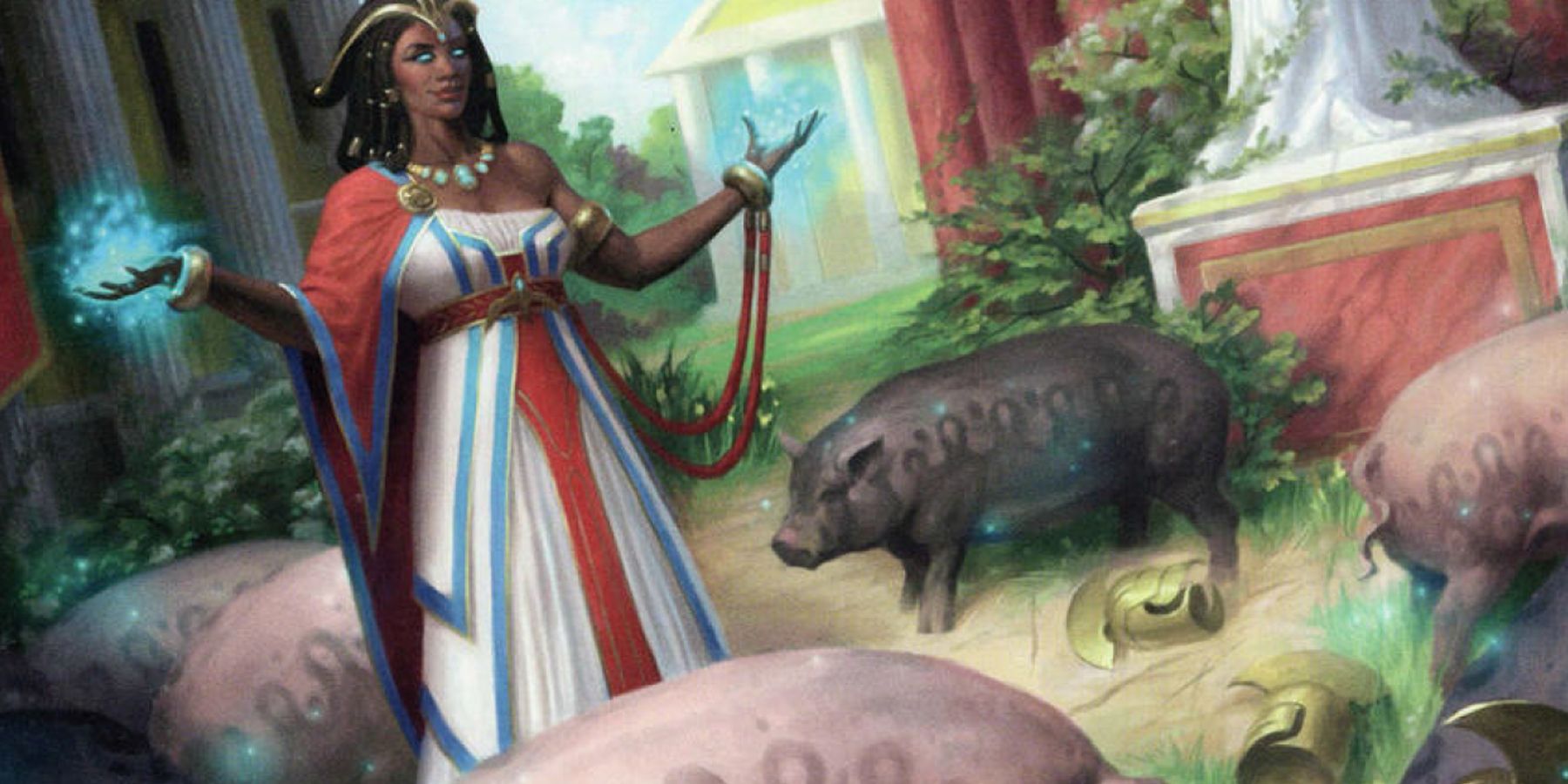
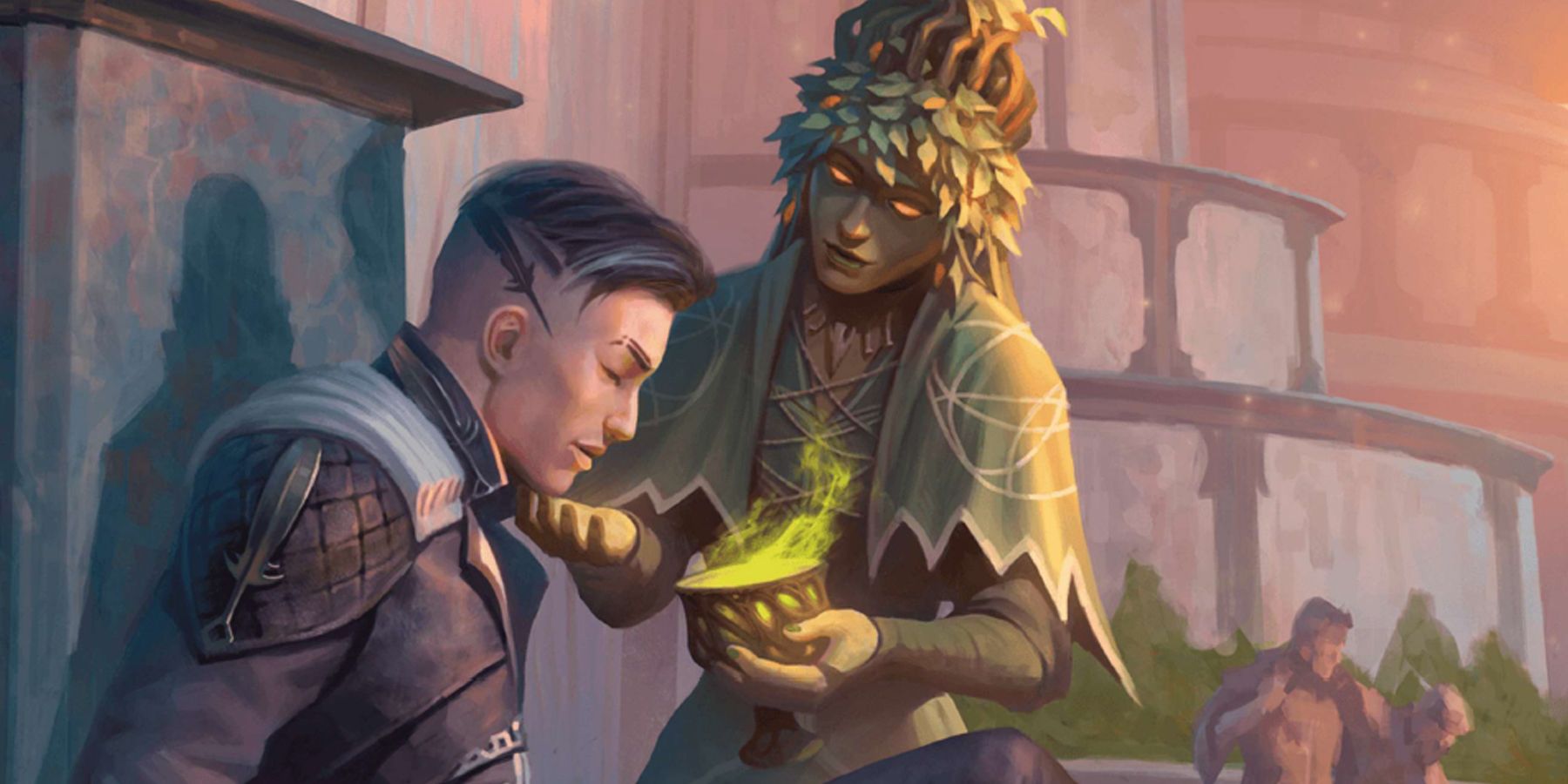

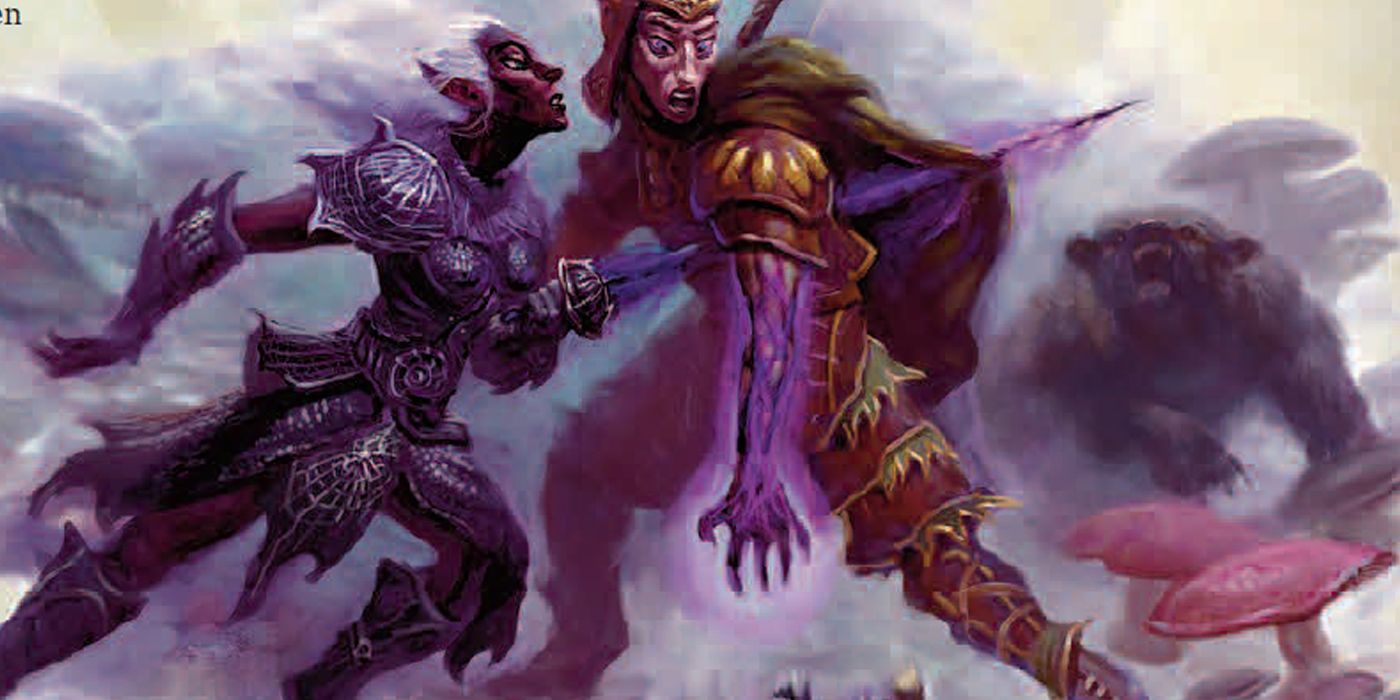

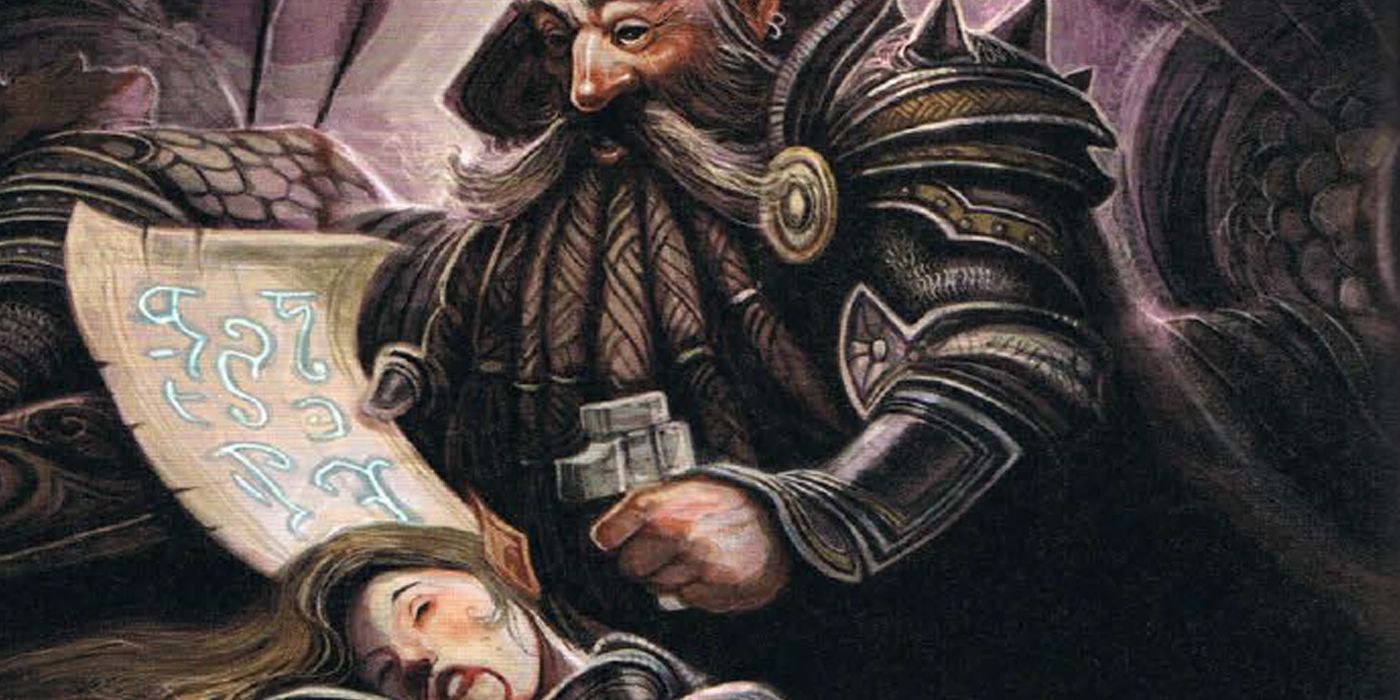

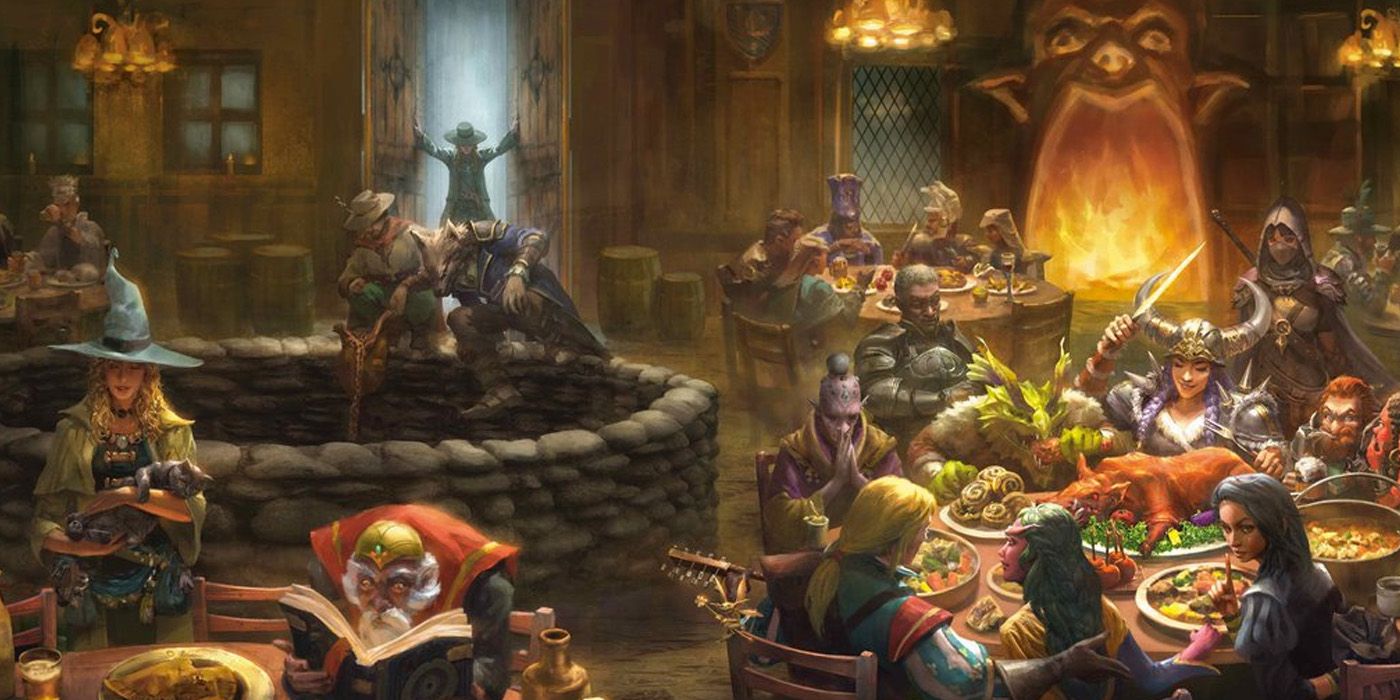
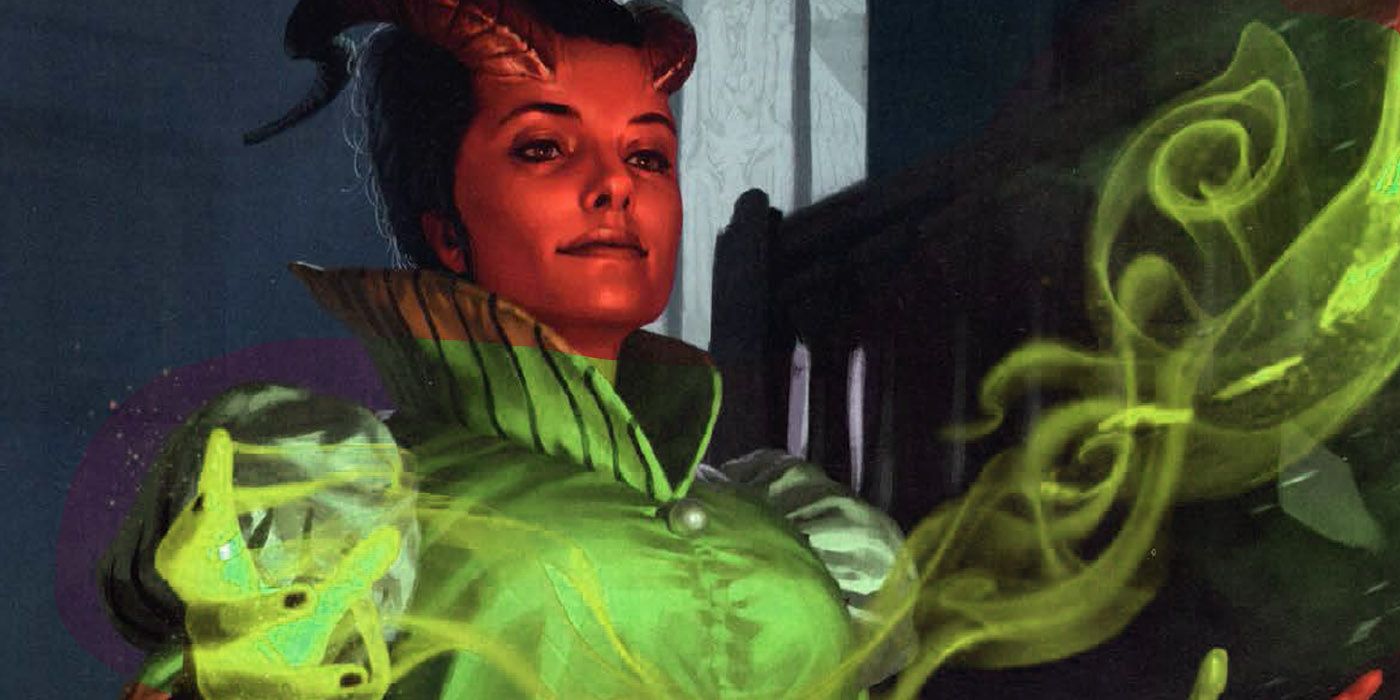
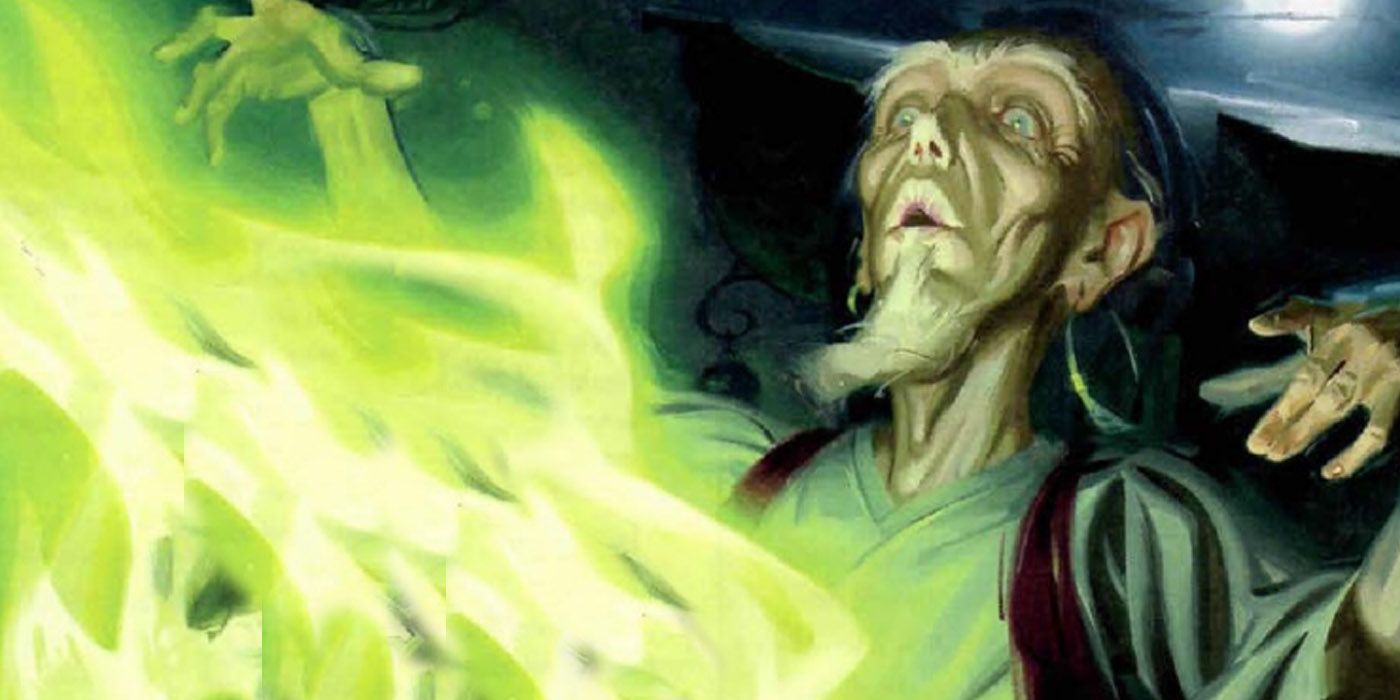

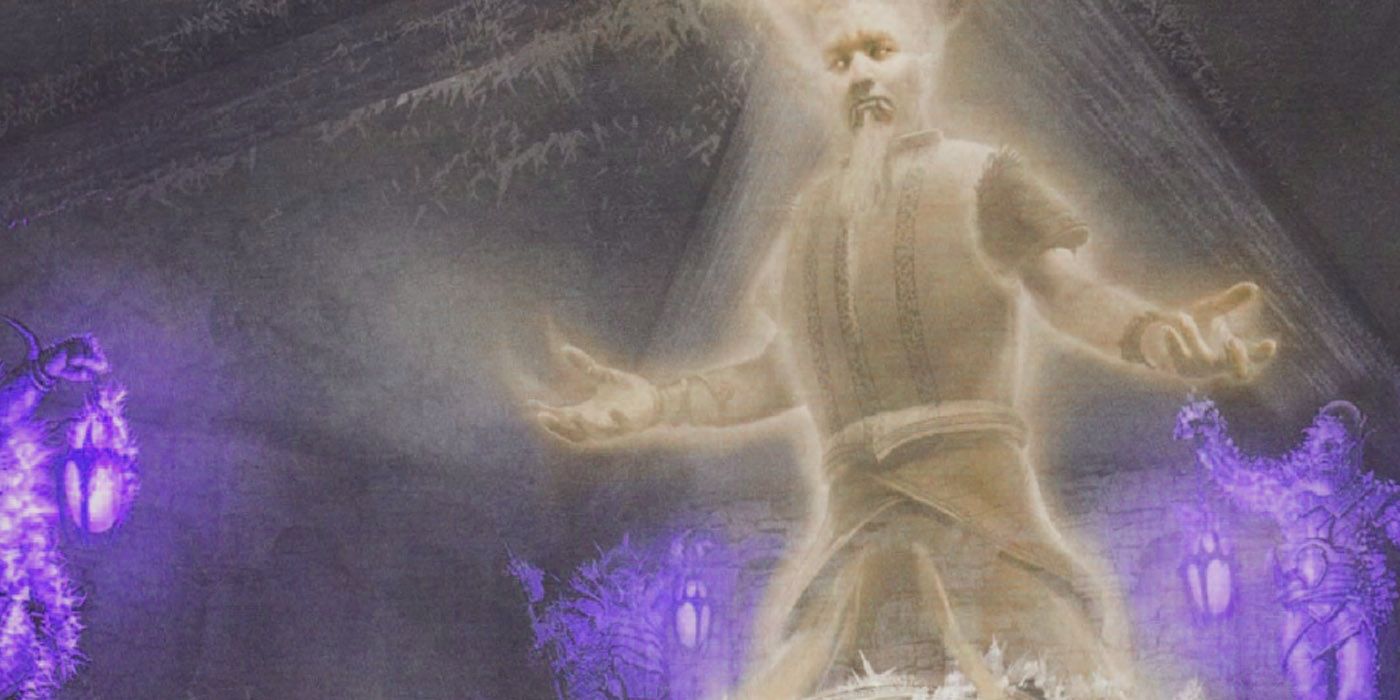





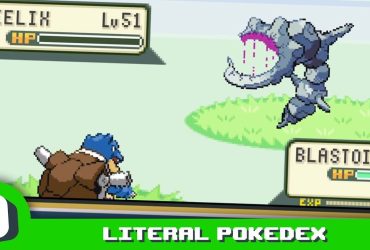





Leave a Reply